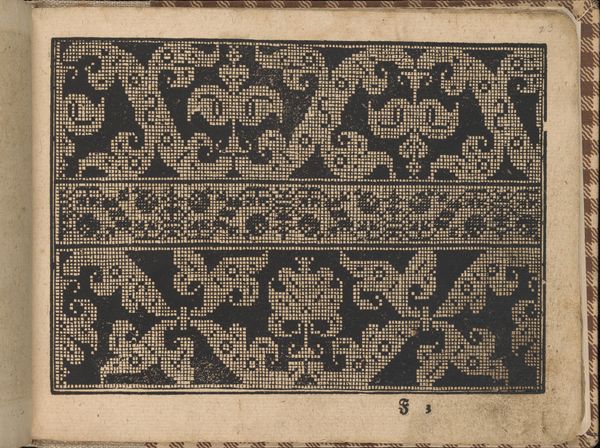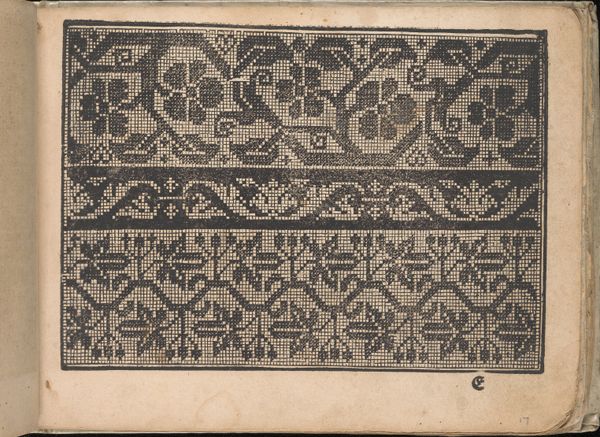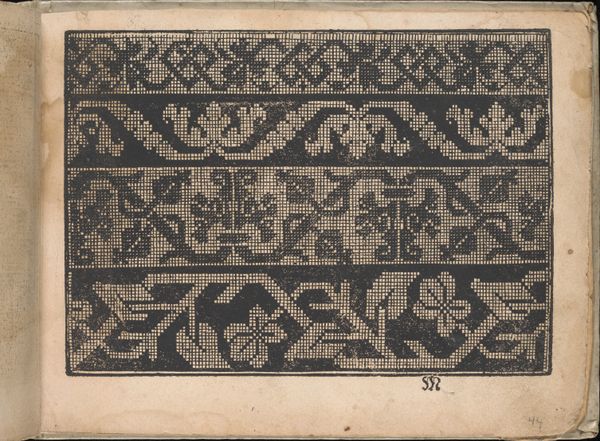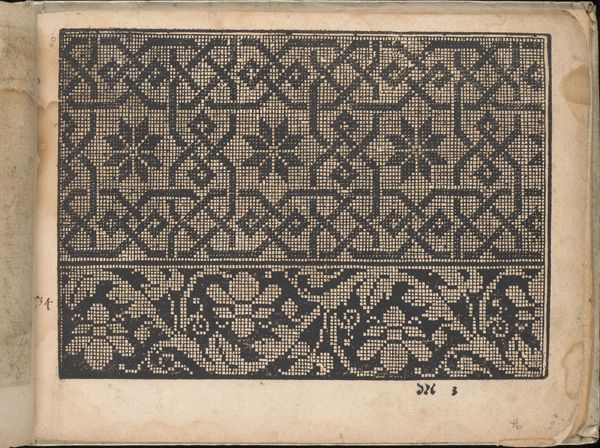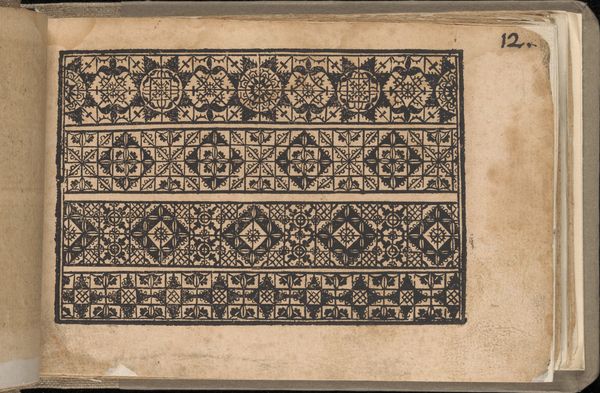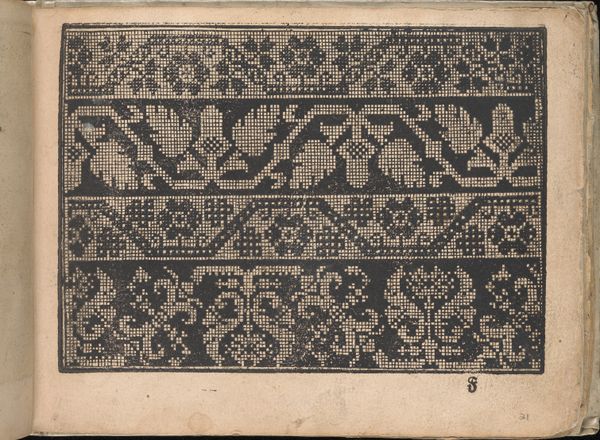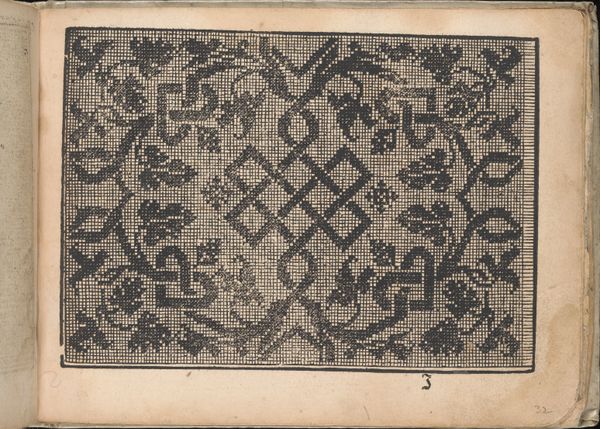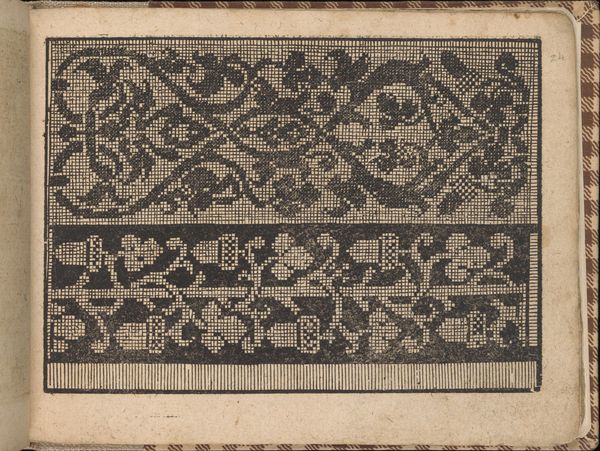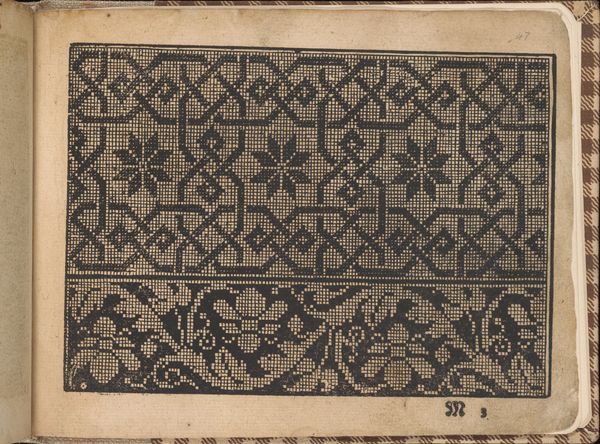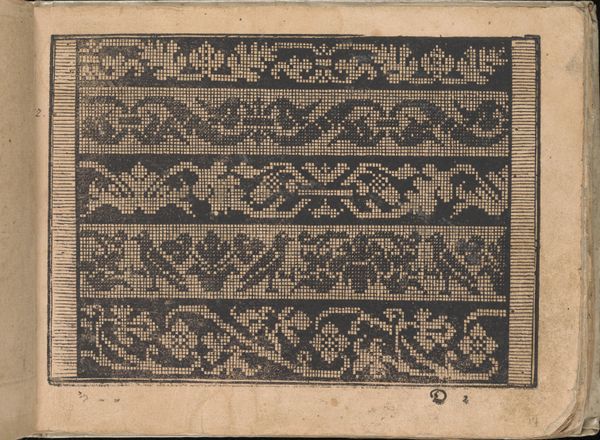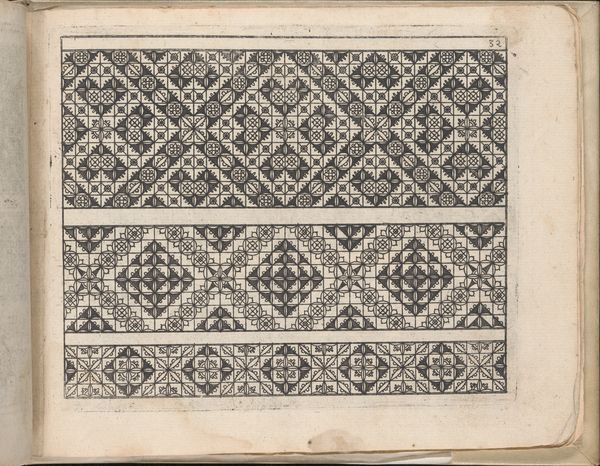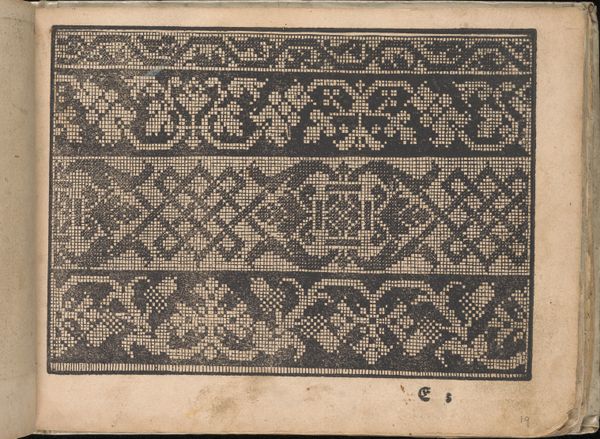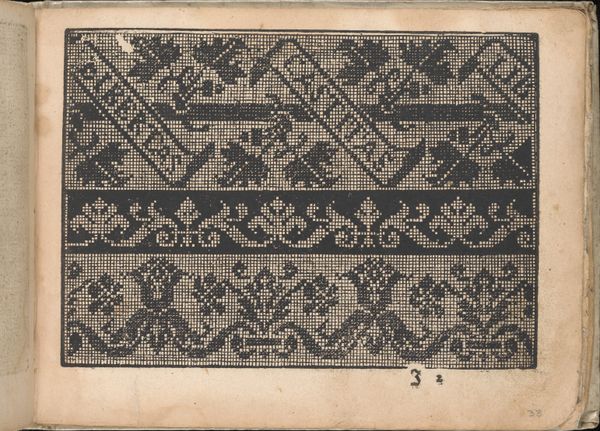
drawing, ornament, print, paper, woodcut
#
drawing
#
ornament
#
toned paper
# print
#
book
#
paper
#
geometric
#
woodcut
#
line
#
northern-renaissance
Dimensions: Overall: 6 1/8 x 7 7/8 in. (15.5 x 20 cm)
Copyright: Public Domain
Editor: This page, 36r, comes from "Neu künstlich Modelbuch," created in 1598 by Bernhard Jobin. It's a woodcut print on paper, a pattern book of sorts. What strikes me is the incredible detail achieved through this relatively simple medium. What's your take on this piece? Curator: It’s interesting to consider this less as "art" and more as a manual, a tool. Think about the production of this book; the paper itself, the ink, the skilled labor of the woodcutter. These elements weren't merely vessels for aesthetic expression but integral to the creation of domestic goods and social signifiers. How do these patterns relate to class and consumption during this period? Editor: So, not just beautiful designs, but a reflection of social and economic factors. Does the geometric and repetitive nature of the patterns suggest anything about the role of women's work at that time? Curator: Precisely! These books directly enabled women's labor. Needlework was not just a pastime, but a form of economic productivity for households, shaping women's lives and even their limited economic independence. These printed patterns were tools empowering them. What does it suggest to see what was once high-end and crafted be now available due to more readily sourced, mass-produced materials and manual? Editor: I never considered the democratization aspect! It’s like early DIY culture fueled by printed media. It shifts my understanding entirely, making me consider who had access, the economic impacts, and how "craft" was viewed then versus now. Thanks! Curator: It makes you rethink our assumptions around high and low art and the socioeconomic contexts shaping their production and consumption, right?
Comments
No comments
Be the first to comment and join the conversation on the ultimate creative platform.
